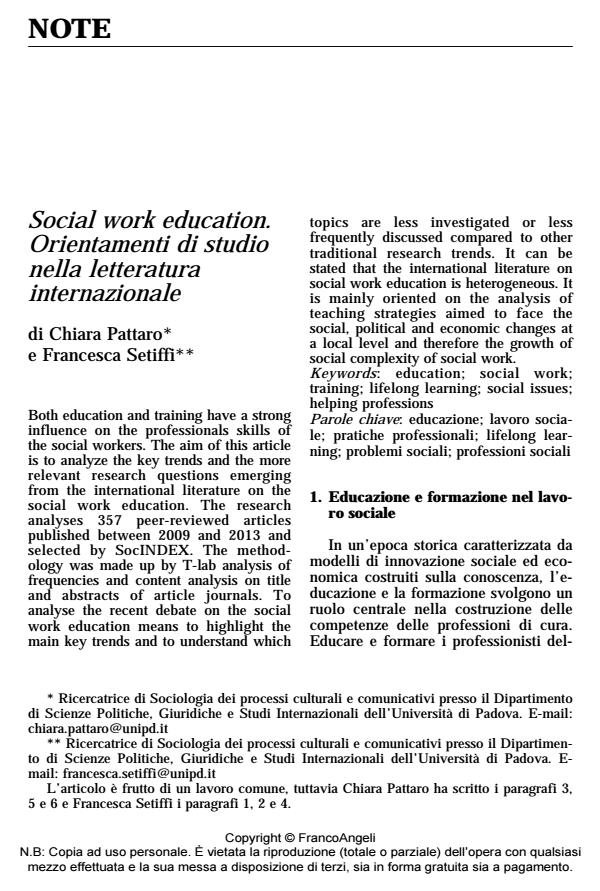Social work education. Orientamenti di studio nella letteratura internazionale
Journal title SALUTE E SOCIETÀ
Author/s Chiara Pattaro, Francesca Setiffi
Publishing Year 2014 Issue 2014/2
Language Italian Pages 15 P. 191-205 File size 522 KB
DOI 10.3280/SES2014-002017
DOI is like a bar code for intellectual property: to have more infomation
click here
Below, you can see the article first page
If you want to buy this article in PDF format, you can do it, following the instructions to buy download credits

FrancoAngeli is member of Publishers International Linking Association, Inc (PILA), a not-for-profit association which run the CrossRef service enabling links to and from online scholarly content.
Chiara Pattaro, Francesca Setiffi, Social work education. Orientamenti di studio nella letteratura internazionale in "SALUTE E SOCIETÀ" 2/2014, pp 191-205, DOI: 10.3280/SES2014-002017